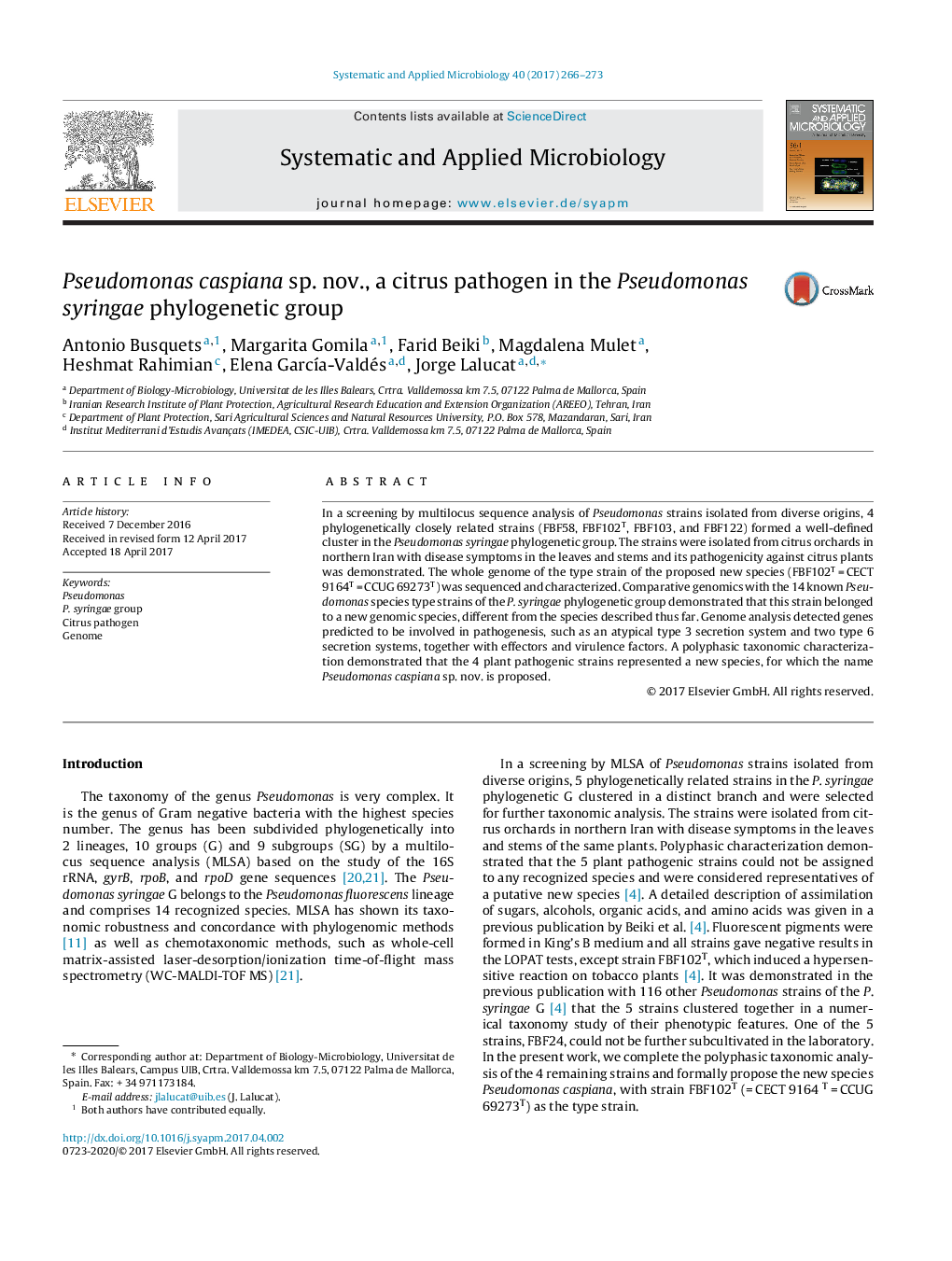| Article ID | Journal | Published Year | Pages | File Type |
|---|---|---|---|---|
| 5519119 | Systematic and Applied Microbiology | 2017 | 8 Pages |
In a screening by multilocus sequence analysis of Pseudomonas strains isolated from diverse origins, 4 phylogenetically closely related strains (FBF58, FBF102T, FBF103, and FBF122) formed a well-defined cluster in the Pseudomonas syringae phylogenetic group. The strains were isolated from citrus orchards in northern Iran with disease symptoms in the leaves and stems and its pathogenicity against citrus plants was demonstrated. The whole genome of the type strain of the proposed new species (FBF102TÂ =Â CECT 9164TÂ =Â CCUG 69273T) was sequenced and characterized. Comparative genomics with the 14 known Pseudomonas species type strains of the P. syringae phylogenetic group demonstrated that this strain belonged to a new genomic species, different from the species described thus far. Genome analysis detected genes predicted to be involved in pathogenesis, such as an atypical type 3 secretion system and two type 6 secretion systems, together with effectors and virulence factors. A polyphasic taxonomic characterization demonstrated that the 4 plant pathogenic strains represented a new species, for which the name Pseudomonas caspiana sp. nov. is proposed.
